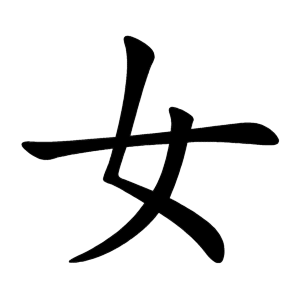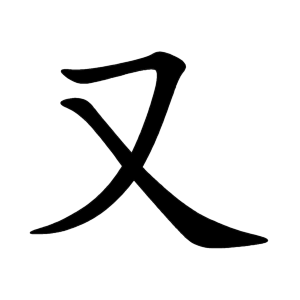From Wikipedia, the free encyclopedia

[edit] Summary
A look at the history of Chinese character Unicode U5974. The modern Mandarin Chinese pronunciation of this character is nu² or nú, while the ancient Chinese pronunciation was probably often more like no. This character is the historical origin of the nu Kana syllabary signs in Japanese (ぬ ヌ -- see en:Katakana#History and en:Hiragana#History).
Above: a schematized form of the earliest (quasi-pictographic) versions of this character, showing an apparent kneeling woman on the left, and a depiction of a right hand on the right. In the early forms of the character, the "hand" radical could also appear on the left; this variant became the character U36A2 (now obsolete, and not included in most modern Chinese fonts). For some references on early forms, see image description page Image:U5973-radical-38_early-form.svg .
Below: one particular quasi-calligraphic rendering of the modern version of this character U5974.
The character displays in your browser as follows: 奴
See also http://en.wiktionary.org/wiki/%E5%A5%B4
For Unicode info, see http://www.unicode.org/cgi-bin/GetUnihanData.pl?codepoint=5974 (official), http://www.fileformat.info/info/unicode/char/5974/index.htm
For the way to write the left half of the modern character, see Image:女-order.gif
This is an SVG version of image en:Image:U5974-History.png, using font at [1].
For symbolism, see also Image:Dina-gor.svg and Image:Kajira-kef.svg.
[edit] Licensing
File links
The following pages on the English Wikipedia link to this file (pages on other projects are not listed):




